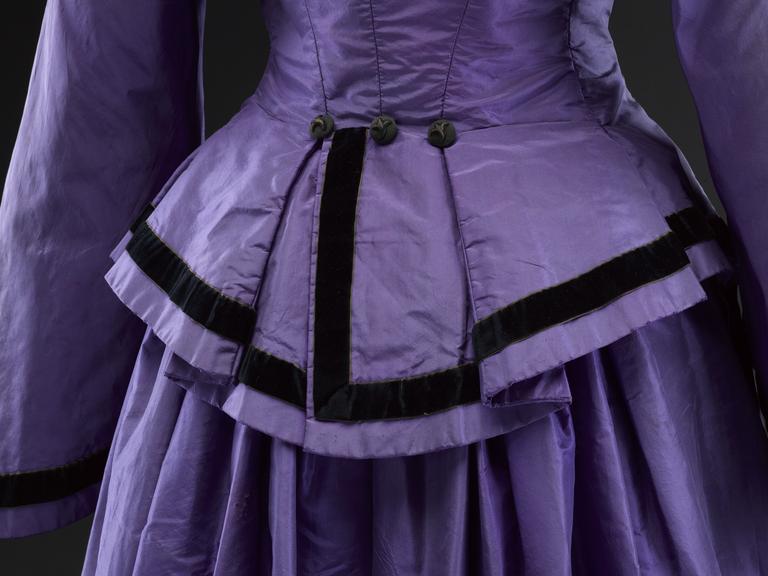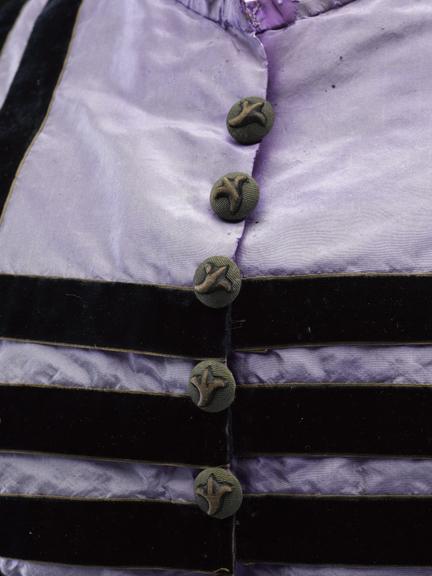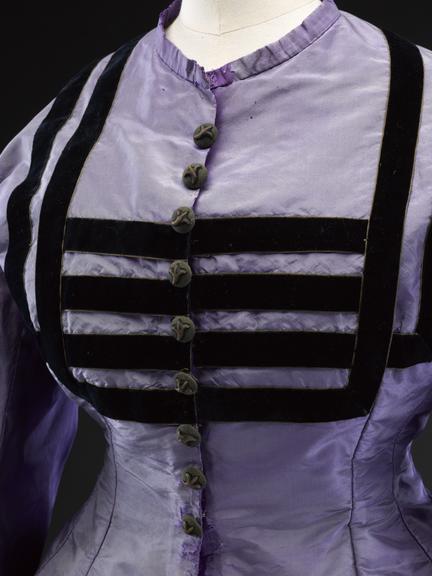
Silk skirt and blouse dyed with Perkin's mauve aniline dye
















Silk skirt and blouse dyed with Sir William Henry Perkin's mauve aniline dye, unsigned, England, 1862-1863
William Henry Perkin discovered the artificial dye mauveine in 1856 by accident. He was trying to synthesise quinine – an expensive natural substance used to treat malaria – by isolating aniline salts from coal tar, a waste product from the gas industry. Perkin’s experiment failed, but he was left with an unfamiliar dark substance which, when dissolved in alcohol, produced a purple solution which could dye silk.
Public demand for mauve soared when Empress Eugénie of France and Britain’s Queen Victoria were seen wearing the colour. Perkin’s mauve was cheaper than traditional, natural purple dyes and became so popular that English humourists joked about the ’mauve measles’. The advent of artificial dyes, following Perkin’s discovery of mauveine, led to a kaleidoscope of colours being used to dye products for mass consumption. They had a dramatic impact on contemporary fashions, but their colours were impermanent and rapidly faded in the light, as seen on this dress. See another example, a plaid wool dress, with the object number 1984-1629.
Look closer
Perkin's Mauve Aniline Dyed DressDetails
- Category:
- Industrial Chemistry
- Object Number:
- 1984-1630
- Materials:
- aniline dye, textile, leather, metal (unknown), wool and silk
- Measurements:
-
overall (estimate): 1500 x 1000 mm
weight: 2kg
weight: 4.40927lbs
- credit:
- purchased




